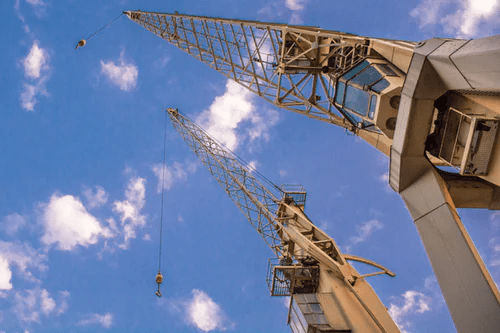Does your next construction project include some serious lifting? Are you unsure about which lifting sling will be the safest and best option?
Deciding on the best type of lifting slings can be quite challenging if you’re not familiar with the specifications each option offers. Having a clear understanding of each type of sling’s application and load restrictions will ensure you choose the correct option for the job at hand.
How Many Types of Slings Are There?
When it comes to hoisting and rigging slings, three types of slings are used in the industry. It’s important to distinguish the different types and their functions. These types are listed as follows:
- Wire rope slings: It’s one of the most popular types of slings used in the construction and lifting industries. These kinds of slings can easily be used with other types of lifting equipment which can increase lift capacity as well as provide additional load support.
- Chain slings: These slings can be used for a variety of functions in the construction industry. In general, these types of slings can carry a capacity of 35 tons. Types include Chooks, self-locking hooks and sling hooks.
- Polyester slings: These slings can be made as webbing or polyester round slings. Usually, they can have a weight capacity of 200 tons and could be as long as 50m in length.
Why are Wire Rope Slings So Popular?
Generally, wire rope slings are the preferred lifting solution in the automotive, construction, oil and gas as well as manufacturing industries. The primary reason is the wire sling rope’s ability to handle heavy loads in heavy duty conditions.
Wire slings are constructed using a variety of configurations of wire and these strand structures can easily provide the following:
- Additional strength
- Fatigue resistance
- Abrasion resistance
- Flexibility
- Corrosion resistance
How Many Types of Wire Rope Slings Can You Choose From?
Essentially there are three types of wire rope slings. The one you need will depend on the load capacity as well as the distance you need the load to be carried. Discuss these criteria with the lifting contractor you’ll be ordering your ropes from.
The three options include:
- Cable laid ropes
- 4” diameter ropes (hand spliced or socketing)
- 12” diameter ropes (hand spliced or socketing)
What are the Benefits of Using a Wire Rope Slings?
In addition to being very strong and resistant, there are several other benefits to using wire rope slings on your next lifting job. Read on to see what they are:
- Lighter in weight than alloy chain slings
- Lower initial cost than other lifting slings
- Smaller diameter design produces more flexibility and higher strength
- Different construction designs provide the resistance needed to perform a safer lifting job
- Can easily be used in basket, vertical and choker hitches
- Multi-part slings or braided slings are more resistant to kinking
- Can easily regain their initial shape immediately after a lift
- If the wire rope becomes damaged, it’s easy to re-use the hardware such as the hooks and master links
How Often Should Wire Rope Slings be Inspected?
Wire rope slings should be inspected at regular intervals. At the very minimum, these types of slings should be reviewed every 12 months. If you’re using the wire rope slings quite extensively or for very heavy loads, it’s recommended to increase your service inspections to monthly checks.
Doing this will ensure your lifting slings are always in safe working condition. It will also provide you with enough time to replace any components that are showing signs of normal wear before the actual sling is damaged. This will avoid a project being put on hold while new lifting slings are purchased or rented.
How Should Wire Rope Slings be Stored to Avoid Damage?
As with any other item, the key to keeping your wire rope slings in good working order involves storing them correctly. Wire ropes shouldn’t just be tossed in a random corner when they aren’t in use.
Instead, they should be stored in a dry, covered and well-ventilated area such as a garage or work shed. These ropes should also not come in contact with the floor where ground debris can damage them. They should be protected from water, dust, steam and any chemical fumes that could damage the integrity of the ropes.
Final Thought
Before making your final decision on the type of lifting sling you’ll be using, it’s important to evaluate the job that needs to be done. Discuss the weight load and distance with the lifting company you’re purchasing or renting the slings from.
They’ll be able to give you the information needed to ensure you select the right type of slings. Once you have the right slings, ensure that you store them correctly and get them serviced or inspected as often as the lifting company suggests. Ensure your employees’ safety by using your lifting equipment correctly!
